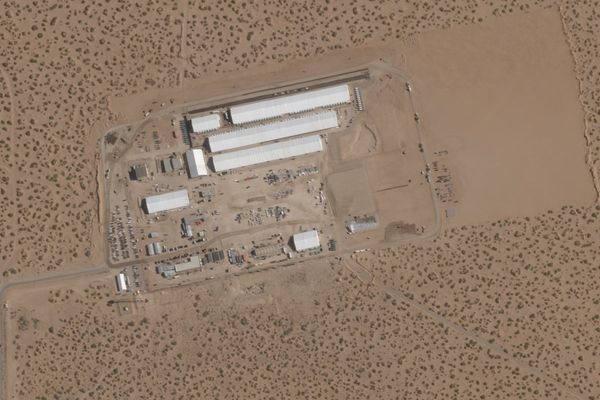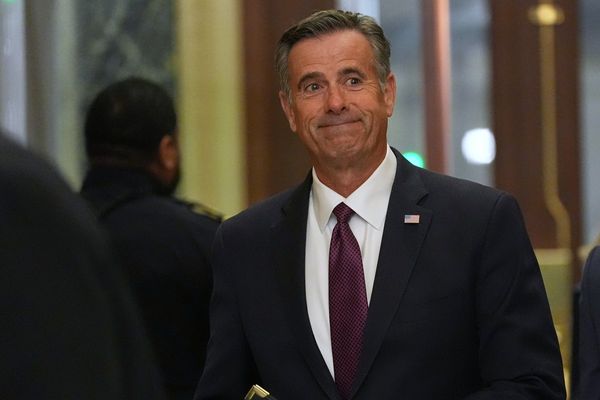
This is how the war ends: Ukraine’s long-awaited spring counter-offensive succeeds in recapturing some or even lots of occupied territory. But Russia’s more numerous forces, dug in behind minefields, tank traps and dragon’s teeth, remain in control of parts of the Donbas and Crimea. As autumn begins, it’s plain. There’s to be no clean sweep.
Amid huge destruction, big Russian losses, critical Ukrainian manpower, weapons and equipment shortages, and waning appetites for an endless war of attrition, Kyiv’s western backers begin to push for a negotiated ceasefire or “durable truce”, pending a longer-term settlement. China gets in on the act, too.
While maintaining its claim to four regions illegally annexed last year, Russia eventually agrees a conditional ceasefire. Vladimir Putin hails the “strategic neutralisation” of Ukraine. President Volodymyr Zelenskiy is obliged to temporarily postpone his drive to restore his country’s pre-2014 borders.
In return, Ukraine is spared further, unsustainable human, economic and infrastructure losses, while retaining roughly 85% of its territory. An internationally monitored, Korean-style “demilitarised zone” freezes frontlines in place. The missiles stop coming. Rebuilding can begin. Refugees come home.
The US and its west European Nato allies declare that democratic Ukraine’s sovereign independence, and the global rules-based order, are saved. Poland and other east European states are less sure. Ukraine’s EU accession is dangled anew. Nato membership will be even trickier, as a Berlin-Brussels spat indicated last week. A final settlement “peace process” may take years. Renewed conflict will be a constant fear.
If this scenario, or something like it, transpires over the coming year, many Ukrainians will inevitably feel betrayed. US President Joe Biden’s pledge to “do whatever it takes” to repel Russia will go unfulfilled. Putin will survive in power despite his many atrocious crimes.
Yet like it or not, this increasingly appears the most likely outcome. A durable truce’s wider appeal is obvious. It would stop the slaughter, head off Russia-Nato nuclear-armed escalation, mitigate global economic, energy and food crises, and bring a sort of peace. Many in Europe and the global south would vote for that right now.
Is shoddy compromise unavoidable? No. In theory, either side could yet win a decisive victory. But much more likely, absent a deal, is a bloody, costly, low-intensity stalemate, dragging on for years. This prospect suits no one, except possibly China and arms manufacturers. “Against this backdrop, calls for a diplomatic end to the conflict are understandably growing,” Richard Haass, an influential former senior US diplomat, and Georgetown professor Charles Kupchan noted last week. “The west should do more now to help Ukraine advance on the battlefield, putting it in the best position possible at the negotiating table later this year.
“Ending the war while deferring the ultimate disposition of land still under Russian occupation is the solution,” they declared. A truce on this basis “could prevent renewed conflict and… set the stage for a lasting peace”.
“As much as we’d all like to see the swift liberation of Ukrainian territory, a spring offensive [is] unlikely to make far-reaching gains,” Harvard’s Stephen Walt, another well-informed observer, concluded last week.
“I suspect most top officials in the Biden administration understand this cruel reality, whatever they may say in public,” Walt wrote. “Instead, they are hoping Ukraine’s armed forces do well enough to convince [Putin] to move toward a ceasefire and eventually negotiate a full peace agreement.”
Gloomy leaked Pentagon assessments of Ukraine’s prospects, and America’s election timetable, reinforce expectations of a US-backed shift towards talks this autumn. America’s top general, Mark Milley, says he does not expect Ukraine to succeed in expelling all Russian forces this year.
Visiting Washington last week, UK defence secretary Ben Wallace, dutifully took his cue. “We should be realistic. There is not going to be a single magic-wand moment when Russia collapses,” he said.
Wallace claimed, disingenuously, that Kyiv, not its allies, would decide when to start talks. The opposite is more likely true. Britain remains more hawkish than most. But tangible pressure to move towards negotiations is building in other quarters, even as EU diplomats and Nato’s Ukraine contact group discuss additional sanctions and military aid this weekend.
Emmanuel Macron, France’s president, is reportedly urging China to lean on Putin. His mooted quid pro quo is acquiescence in Beijing’s plans for Taiwan. Germany’s reluctant warrior, Olaf Scholz, has always insisted only dialogue will end the war. Worrying questions hang over Biden’s ability to maintain current levels of US support.
It’s clear Ukraine’s leaders have but a few months in which to beat the Russians back, before so far largely tacit but growing international pressure to open negotiations – whether they want them or not – becomes overt and potentially irresistible. Presumably, Putin knows this. It affords him an added incentive not to give ground.
Out of patience, a group of former senior diplomats last week urged chronically over-cautious western governments to finally “go all in” and provide better tanks, longer-range missiles and fighter aircraft “to pave the way to Ukrainian victory”. As Haass urged, “it’s time for the west to stop deterring itself”. But it may be too late. Too many politicians have dithered for too long.
So everything rides on the coming offensive. Already dubbed “Ukraine’s longest day”, it could determine the country’s long-term relationship with both east and west. For now, Zelenskiy, backed by 64% of Ukrainians, is sticking, in public at least, to his maximalist position – that every last inch of occupied territory be liberated.
Yet even as his troops move into position, Zelenskiy is surely aware of the rear echelon second-guessing and political calculation that is going on between allies behind his back. To end their pain and suffering, Ukrainians may soon be asked to swallow a very bitter pill.







